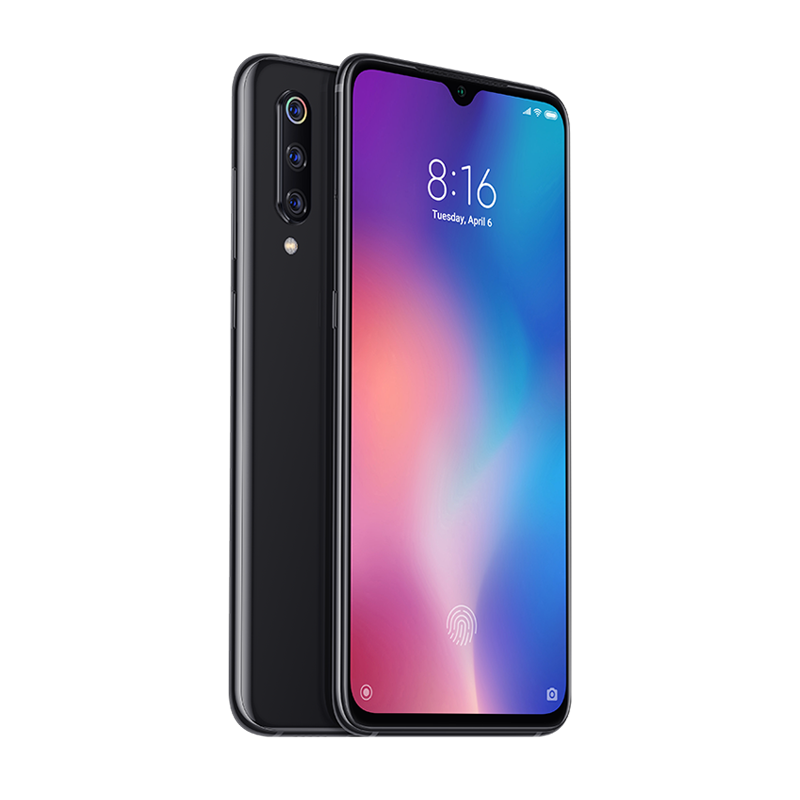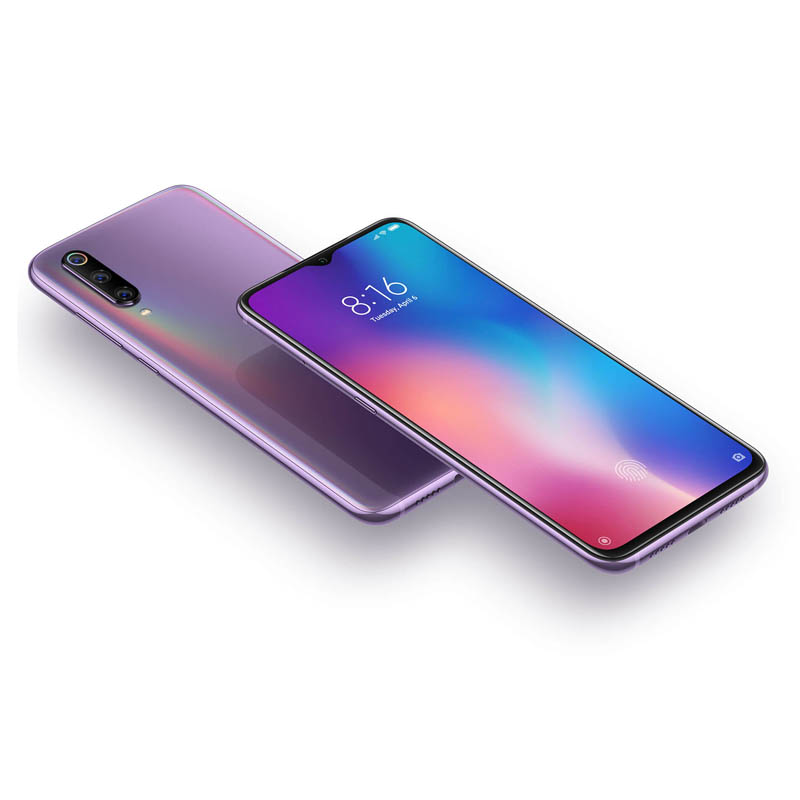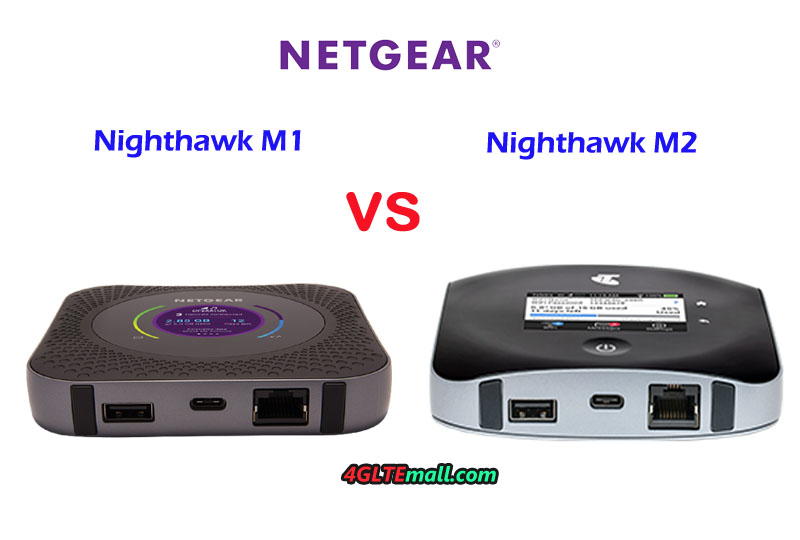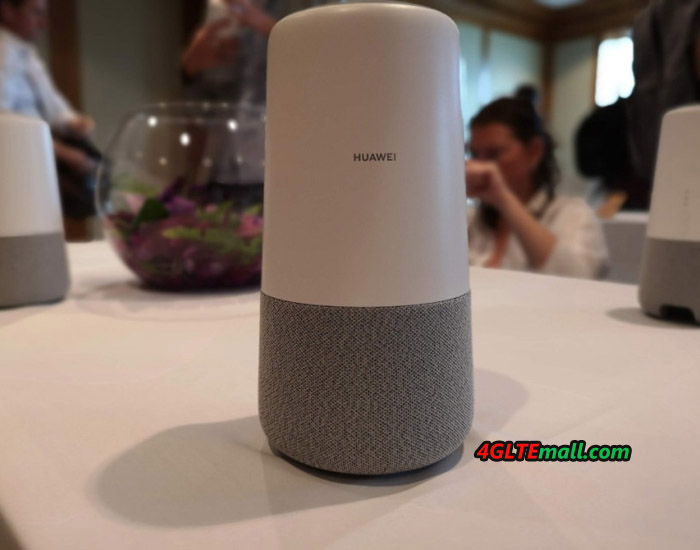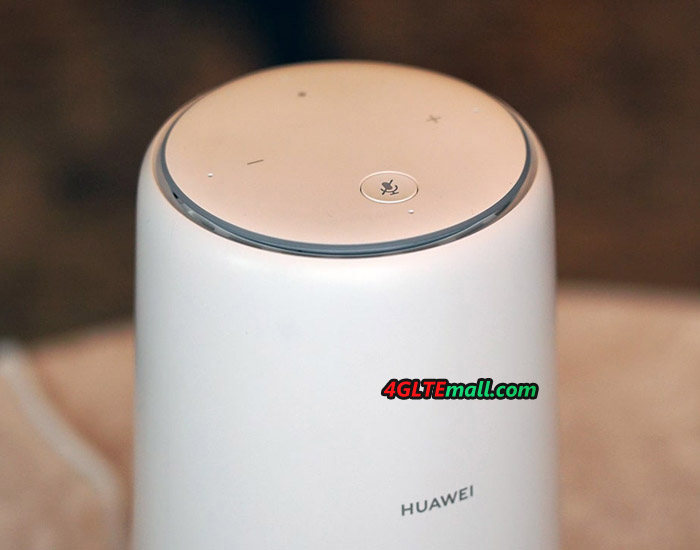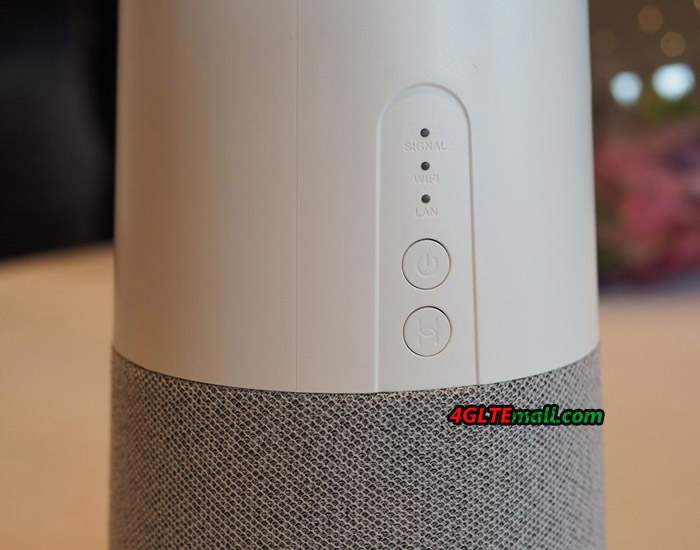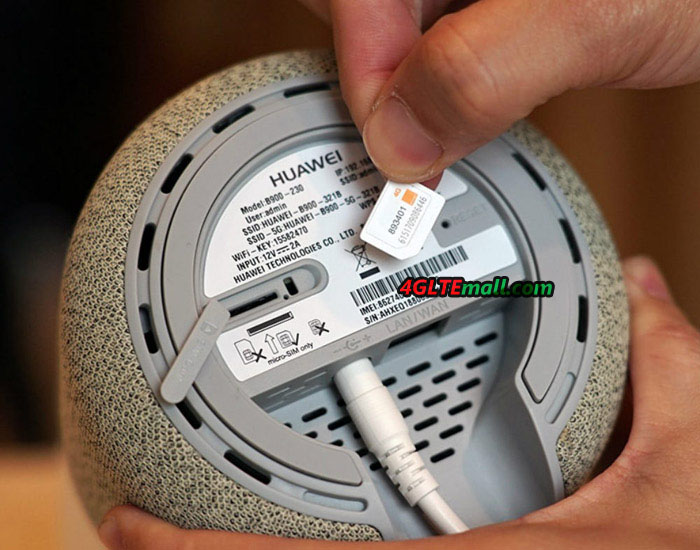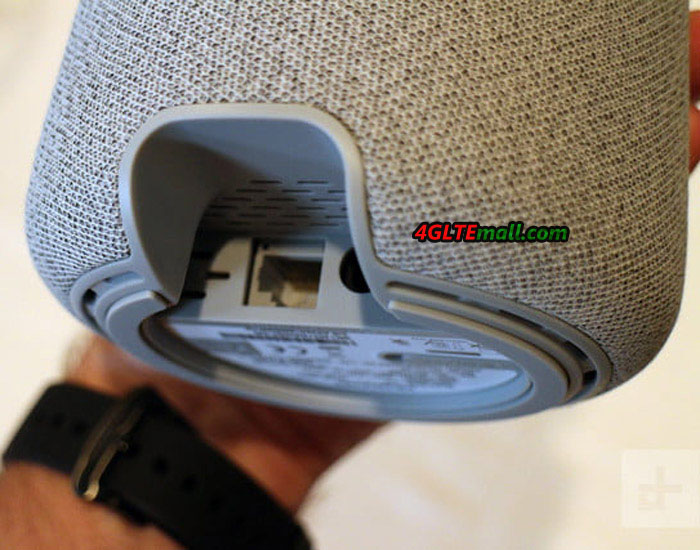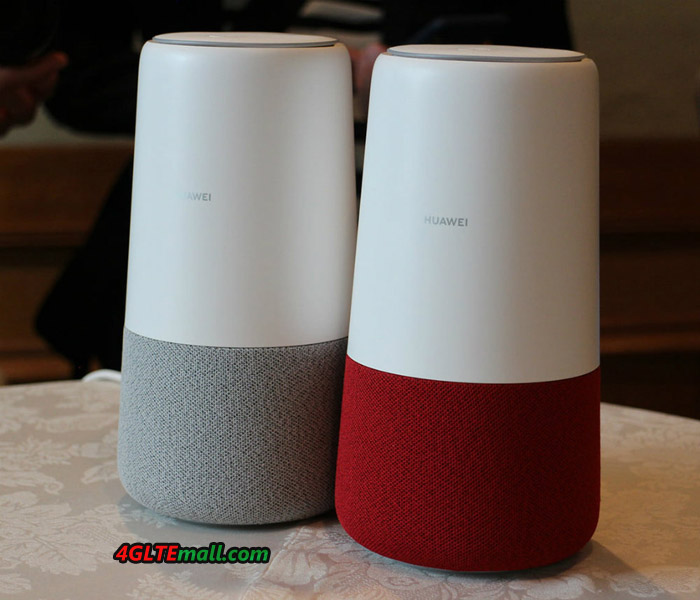4G WIFI ROUTER
-
[PR]
×
[PR]上記の広告は3ヶ月以上新規記事投稿のないブログに表示されています。新しい記事を書く事で広告が消えます。
-
Netgear Nighthawk M2 - Fastest LTE Router Test
Earlier this year, Netgear introduced the Nighthawk M2, a new mobile hotspot that transforms UMTS or LTE-based Internet access into a Wi-Fi hotspot to provide wireless network for multiple devices such as smartphones, tablets or laptops. The successor of the Nighthawk M1 supports LTE Cat. 20 and in theory allows data transfer rates of up to 2 Gbit/s downstream and 150 Mbit/s upstream.
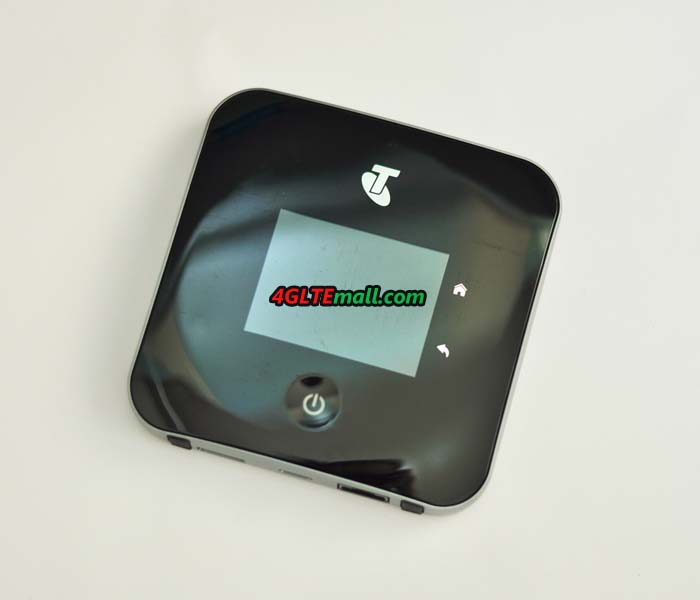
In practice, there are hardly any 4G networks supporting such high data transfer rates. Is still worth the purchase of the mobile hotspot, which is not a bargain with a purchase? We had the opportunity to put the heavy square device to a thorough test.
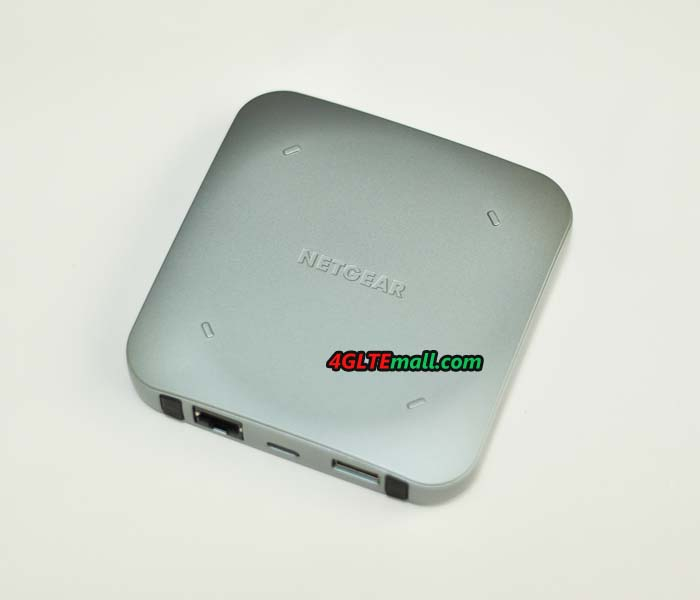
The Netgear Nighthawk M2 mobile router comes in a convenient package. In addition to the router itself, there is the battery and a quick start guide with the power supply and connecting cable. The supplied battery has a capacity of 5040 mAh. The WLAN standards 802.11a, b and g are supported. The 4G mobile hotspot is working on 2.4 and 5 GHz. The Netgear M2 has a USB-A and USB-C as well as an Ethernet interface. There are also connection options for external antennas (Buy Netgear Nighthawk M2 External Antenna). The LAN port can be used to use a wired Internet access instead of the mobile modem and to redistribute it via WLAN.
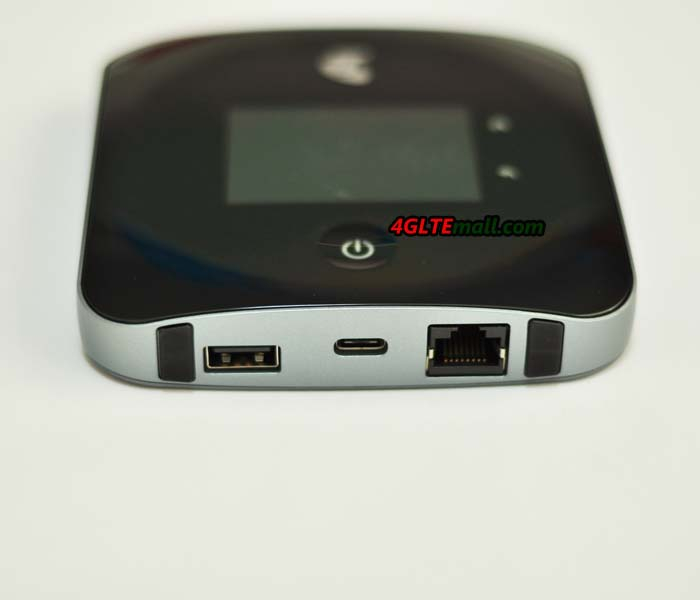
Good workmanship and shiny surface
The processing of the Netgear 4G mobile router is impeccable. You can argue about the shiny surface. Here you can see very clear fingerprints very quickly, especially since the Nighthawk M2 has a touch screen, so it regularly gets into the embarrassment of touching the display. The complete initial setup can also be made via the touch-sensitive screen. A separate app or the web-based access to the M2 pocket WiFi router menu is possible, but not mandatory.
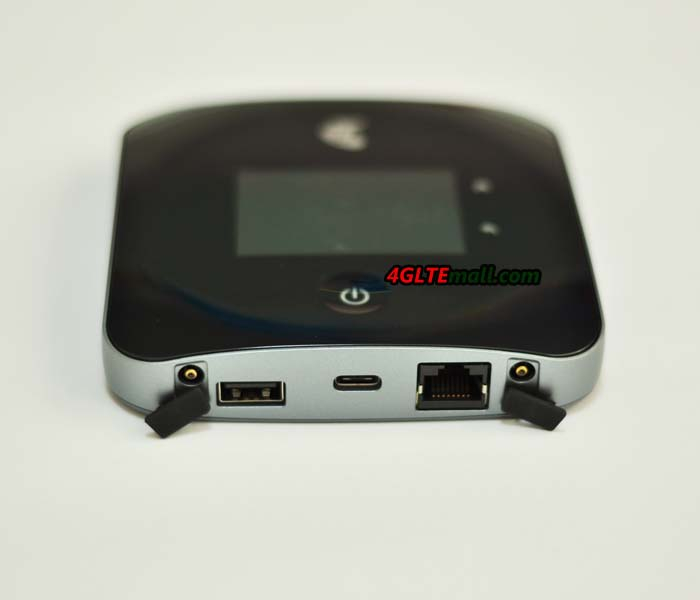
We have set up the router right on the touchscreen made, which was not easy. For one thing, the virtual keyboard is quite small due to the display size. So you always catch the wrong letter when typing. In addition, the screen does not respond as well to inputs as used by higher quality smartphones. If the setup of a network identifier (SSID) and the associated password worked quite well, then setting a (somewhat complicated) administrator password was not possible on the second attempt, so we skipped this step and later have made on the configuration via the Netgear Mobile App.
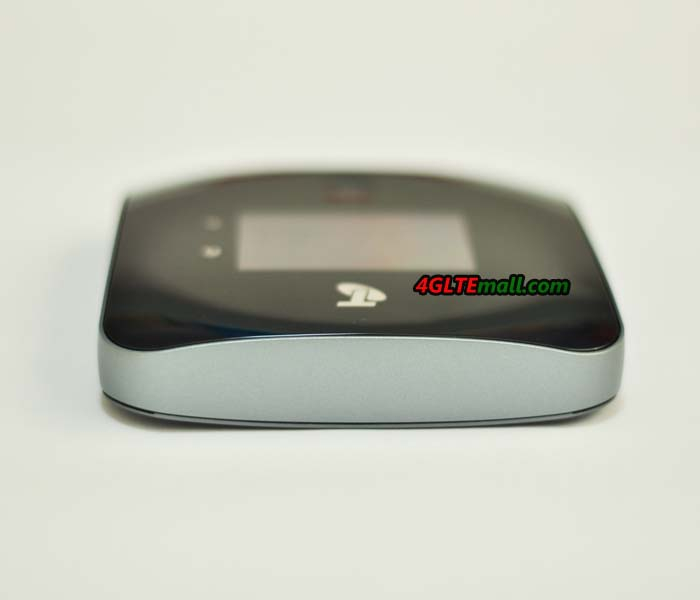
After the initial setup, the Netgear Nighthawk M2 mobile hotspot was immediately ready for use. The configuration for SIM cards is made automatically. As soon as the MiFi was set up, the availability of a firmware update was already displayed. We have installed this over the existing LTE data connection. In the process, around 160 MB of data was transferred. What changes the update brings is unknown. The internet connection via the Netgear Nighthawk M2 was very stable in the test for several hours. It did not matter if we used an Apple iPhone XS Max, a Samsung Galaxy S10+ or an Apple MacBook Pro.
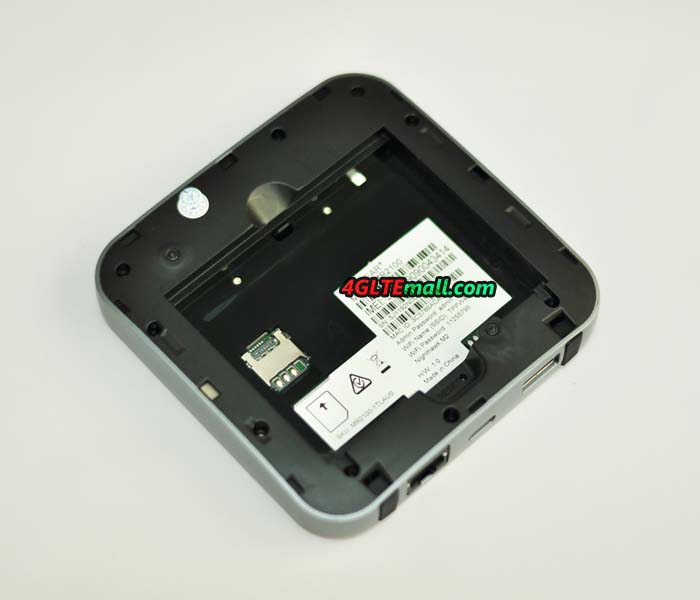
The display of the router shows the current data consumption, the ID of the SIM card provider and the network technology used. There is also a small S-meter, which provides information about the quality of mobile reception. The battery level is also displayed. By default, you can also find the names of the Wi-Fi hotspot and the password via the touchscreen. This display can be deactivated if desired. Numerous settings are possible via the touchscreen menu. First, there is a WPS function. Then the user can limit the hotspot to one of the two WLAN frequency ranges (2.4 or 5 GHz). The connected devices can be displayed and, for example, you can specify whether the hotspot is put into standby mode after a period of non-use to save battery capacity.
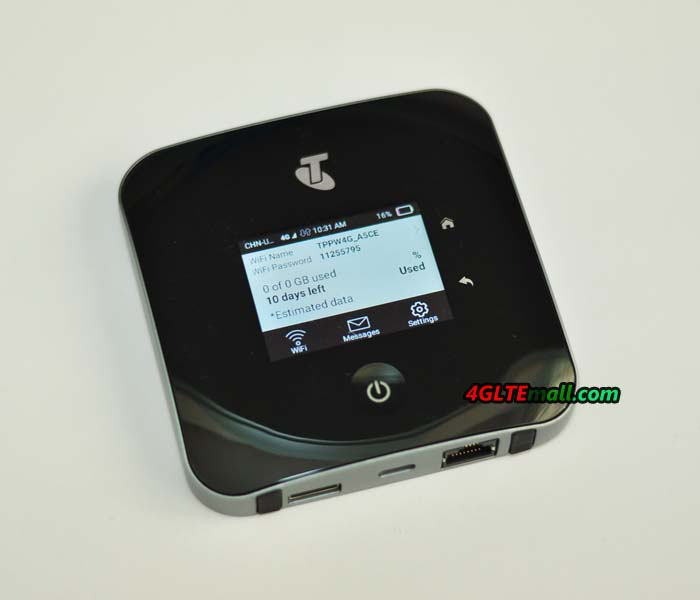
Other features
Other possibilities are the restriction of Wi-Fi hotspots to a smaller reception area in order to save battery capacity or the automatic WLAN detach when USB tethering is used. The brightness of the display can be adjusted and the user can decide whether he wants to use the Internet access only in the home network or in international roaming. SMS messages can be sent and received via the Netgear Nighthawk M2. As we have already mentioned regarding the initial setup: The touch screen does not always respond reliably to inputs and the virtual keyboard is quite small. Apart from that, the menu is functional and intuitive to use.
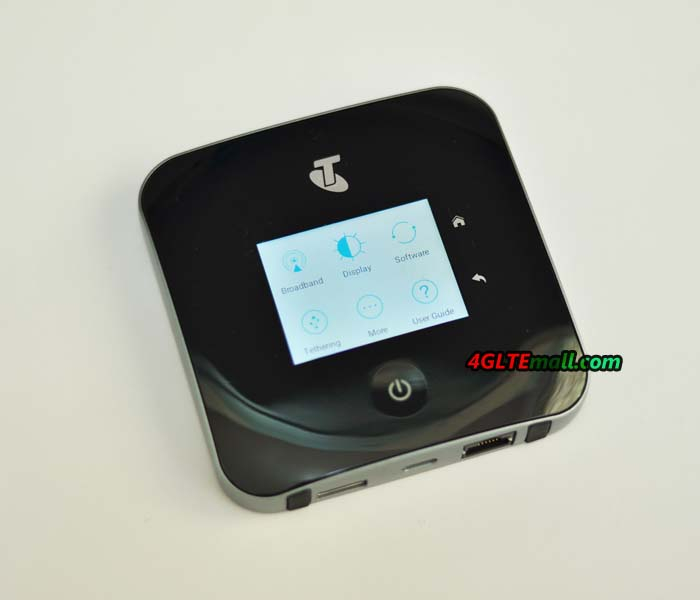
Good performance even in mobile operation
With a SIM card from Vodafone, we have achieved data transfer rates of up to 110 Mbps in the downstream and 61 Mbps in the upstream. This is far from the peak speeds that the Netgear Nighthawk M2 allows, but is more or less equivalent to what the mobile telecom Internet access does with the smartphone. Even in mobile mode, such as a Wi-Fi hotspot in the car, the router performed well in the test. At speed 120Mbps on the highway, the performance of Internet access was still fine. Compared to a WLAN adapter such as the Huawei E8377 CarFi, the Netgear device earns more scores by the possibility to connect an outdoor LTE antenna. In regions with bad LTE coverage, a magnetic base antenna on the car roof provides a significant improvement in reception, which also affects the performance of Internet access.
Conclusion: Good hotspot with slight weaknesses
Although Netgear Nighthawk M2 is well-made and provides stable Internet access for up to 20 devices, flaws such as the only moderately good touchscreen provides bad experience for users. For almost half of the purchase price, the Netgear Nighthawk M1 is available, which supports data transfer rates of up to 1 GBit/s via LTE, more than what the nets usually give out, so this model offers the much better price/performance ratio.
PR -
Xiaomi Mi 9 Pro 5G Smartphone Review
The Chinese manufacturer Xiaomi, bring his new 5G smartphones to the customer: Mi 9 Pro 5G. Comparing with the predecessor Xiaomi Mi 9, the new smartphone supports the new 5G mobile communications standard and also brings some interesting functions with it.
New 5G smartphone
The Xiaomi Mi 9 Pro 5G is not the first 5G cell phone from Xiaomi. The first 5G cell phone is Xiaomi Mix 3 5G. Of course, the device also works in older mobile standards such as LTE and 3G. As introduced, Xiaomi Mi 9 Pro 5G is to sport 30W Super Fast Wireless Charging technology. The device has already received TENAA certification which revealed some key specifications. The Mi Pro 5G cell phone will have a 6.39-inch display while running on Snapdragon 855 Plus SoC. The phone will feature up to 12GB RAM with up to 512GB internal storage along with a 4,000mAh battery.
Super Charge 30W Wireless Technology
Especially interesting is the charging function. The new Xiaomi 5G phone is the first smartphone that can be charged with 30 watts. The highlight of this event was Xiaomi’s Mi Charge Turbo technology, of course. Xiaomi claims that Mi Charge Turbo is the world’s first 30W wireless charging solution. With this, users can wirelessly charge a 4,000mAh battery phone from 0% to 50% in just 25 minutes, and up to 100% in just 70 minutes. This pitches the wireless charging solution to be higher than a lot of current generation wired charging solutions. The specifics of the working of this technology are not very clear at this stage since the presentation and source are in Chinese. Thus, the device is expected to be one of the fastest charged smartphones in the market despite large 4,000 mAh battery. In addition to wirelessly charging the smartphone, it can also charge other devices.
So far, it was only possible to buy the smartphones and other devices of the bustling manufacturer on gray imports or Chinese online shops. But the company wants to change that soon. Because it has announced that it intends to distribute its smartphones on many other markets officially.
Mi 9 Pro 5G Availability and Price
Xiaomi has not shared any launch and available details about the Mi Pro 5G. But a recent leak indicates that the company is pretty close to launching the smartphone. And the Xiaomi Mi 9 pro 5G price is not yet known, but considering Xiaomi style, it’s expected to be better than Huawei 5G smartphone Mate 20 X 5G and ZTE Axon 10 Pro 5G.
-
Netgear Nighthawk M2 MR2100 VS M1 MR1100
To meet the requirements from 5G network, Netgear presented a new mobile WiFi hotspot Nighthawk M2 for the Australian network provider Telstra and carriers in Europe. Netgear Nighthawk M2 is an ultra-fast portable WiFi router with next-generation Gigabit 4G LTE connectivity with a download speed of up to 2 Gbps. The Netgear Nighthawk M2 5G router is upgraded from the predecessor Nighthawk M1, so you may ask what’s the difference between Netgear Nighthawk M2 and M1?
In the table below, you will see the details specs of Netgear Nighthawk M2 unlocked and Nighthawk M1 unlocked for your reference:
Model Netgear Nighthawk M2 Netgear Nighthawk M1 Product type 5G Mobile Hotspot 4G LTE Mobile Hotspot Category LTE Cat.20 LTE Cat.16 Chipset Qualcomm Snapdragon X24 Qualcomm MDM9x50 Data rates DL 2Gbps/UL 150Mbps DL 1Gbps/UL 100Mbps Supported 4G LTE frequency bands -- Telstra Nighthawk M2 MR2100-1TLAUS: Band 1/3/7/8/28 -- Nighthawk M2 MR2100-100EUS: Band 1/3/7/8/20/28/38/40/41 -- Hong Kong Nighthawk M2: LTE Band 1/3/8/20/29/30/38/40/41 -- Telstra Nighthawk M1: Band 1/3/7/8/28 -- AT&T Nighthawk M1: Band 1/2/3/4/5/7/12/29/30/66 -- Hong Kong Nighthawk M1: LTE Band 1/3/8/20/29/30/38/40/41 WLAN 802.11a/b/g/n/ac, dual-band 2.4GHz & 5GHz 802.11a/b/g/n/ac, dual-band 2.4GHz & 5GHz Max support users 20 users 20 users MIMO 4 X 4 MIMO 4 X 4 MIMO Connector for external antenna Two, TS-9 jacks Two, TS-9 jacks Buy Antenna Netgear Nighthawk M2 Antenna Netgear Nighthawk M1 Antenna App management Netgear Aircard APP Netgear Aircard APP SIM type Micro SIM Micro SIM Battery Removable, 5040 mAh Removable, 5040 mAh Dimensions 105.5 x 105.5 x 20.35 mm 105.5 x 105.5 x 20.35 mm Ethernet Port * One port for LAN port(RJ-45) * One port of USB-A * One port of USB-C * One port for LAN port(RJ-45) * One port for USB 2.0 Datasheet download Netgear Nighthawk M2 Datasheet Netgear Nighthawk M1 Datasheet User Manual Netgear Nighthawk M2 Manual Netgear Nighthawk M1 Manual Other features 3GPP, Rel. 14, 5 band CA, 256QAM DL / 64QAM UL, JumpBoost 3GPP, Rel. 12, 4 band CA, 256QAM DL / 64QAM UL, JumpBoost Firmware download Nighthawk M2 Firmware Nighthawk M1 Firmware Drivers Nighthawk M2 Driver Nighthawk M1 Driver Reviews Netgear Nighthawk M2 Review Netgear Nighthawk M1 Review Price 999.00USD 459.00USD Here you can check the general comparison of Nighthawk M2 and M1:
Nighthawk M2 Mobile Router (MR2100):
- LTE CAT 20, DL support up to 2Gbps speeds - 3GPP, Rel. 14
- 5CA with 20 simultaneous Downlink layers
- 4x4 MIMO
- 256QAM DL / 64QAM UL CA 3C, 7C
- 11ac Dual band dual concurrent
Nighthawk M1 Mobile Router (MR1100):
- LTE CAT 16, DL support up to 1Gbps speeds - 3GPP, Rel. 12
- 4CA with 10 simultaneous Downlink layers
- 4x4 MIMO
- 256QAM DL / 64QAM UL CA 3C, 7C
- 11ac Dual band dual concurrent
We can see that, based on the technology improvement, Netgear Nighthawk M2 is more advanced than M1, M2 can achieve download speed up to 2Gbps while M1 only half of it. And the Nighthawk M2 has larger touch screen to 2.4 inches. Other features are very similar.
-
Huawei B612 VS Huawei B310
Since 4G LTE networks are more and more popular, people usually need one or more home WiFi router for the terminals at home to access the internet. Huawei had provided many wireless router models for home usage and many of the Huawei Home WiFi routers are very well-known by the users. The Huawei B310 router is one of them. A few months ago, Huawei presented a new 4G home WiFi router named Huawei B612. For those people who are looking for a home WiFi router, they may want to know what the difference is between the Huawei B612 and Huawei B310, and which one is better to buy. You may check below the images of the two routers and specs comparisons, in the summary, we will list the key difference between them for the reference.
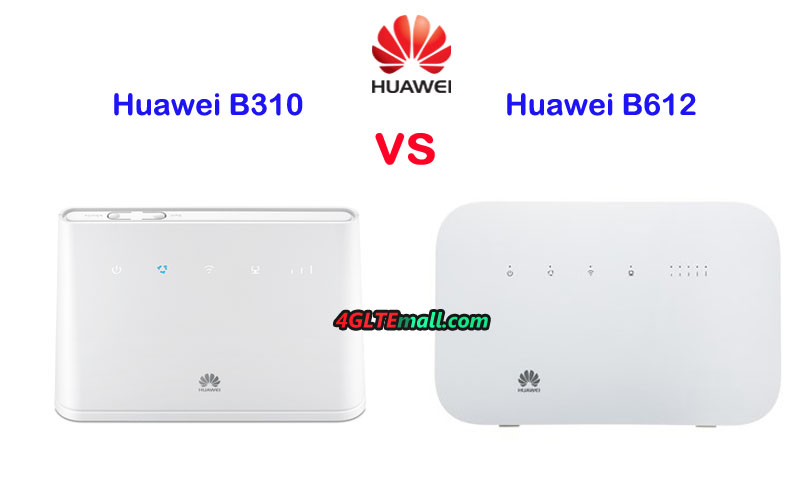
Huawei B612 VS Huawei B310 Specifications
Model Huawei B612 Huawei B310 Product type Huawei WiFi Router with Ethernet port LTE WiFi Router Category LTE Cat.6 LTE Cat.4 Chipset HiSilicon LTE Cat6 Chipset Hisilicon Balong LTE Data rates DL 300Mbps/UL 50Mbps DL 150Mbps/UL 50Mbps Supported 4G LTE frequency bands Huawei B612s-25d: B1/B3/B7/B8/B20/B38/B40/B41/B42/B43 Huawei B612s-51d: B2/B4/B5/B7/B41 * Huawei B310s-927: B1/B3/B8/B40 * Huawei B310As-852: B3/B7/B8/B38/B39/B40/B41 * Huawei B310s-22: B1/B3/B7/B8/B20 * Huawei B310s-518: B1/B2/B4/B5/B7/B28 WLAN 802.11 b/g/n/ac, single-band 2.4GHz 802.11b/g/n, single-band 2.4GHz Max supported users 32 users 32 users MIMO 4 x 4 MIMO n/a Antenna Two, SMA-female jacks Two, SMA-female jacks Buy Antenna Huawei B612 external antenna Huawei B310 external antenna App management Huawei Hilink APP Huawei Hilink APP SIM Size Micro SIM Standard SIM Battery NO No Dimensions 240 × 155 × 78 mm 181.0mm x 126.0mm x 70.0mm Interfaces * 3 x LAN port(RJ45) * 1 x LAN/WAN port (RJ45) * 1 x telephone port(RJ11) * Two external LTE antenna ports (SMA-female) * One micro-SIM card slot * 1 x USB 2.0 port * 1 x power adapter port * 3 x LAN port(RJ45)(Depends) * 1 x LAN/WAN port (RJ45) * 1 x telephone port(RJ11)(depends) * Two external LTE antenna ports (SMA-J1.5) * One SIM card slot * 1 x USB 2.0 port(depends) Datasheet Huawei B612 Datasheet(PDF) Huawei B310 Datasheet(PDF) User Manual Huawei B612 User Manual(PDF) Huawei B310 Manual(PDF) Other features Firewall, CS Voice, VoIP, VoLTE, IPv6/IPv4 dual stack, NAT, DHCP, VPN, DMZ, UPnP, ALG, Voice, DHCP, NAT, ARP, ICMP, DNS Relay, IPv6/IPv4 dual stack, VPN passthrough, Firewall, URL filter, LAN IP filter, DMZ, UPnP, ALG, Port forwarding Firmware download Huawei B612 firmware Huawei B310 firmware Driver Huawei B612 driver Huawei B310 driver Reviews Huawei B612 Review Huawei B310 Review Price/USD 199.00USD 139.00USD
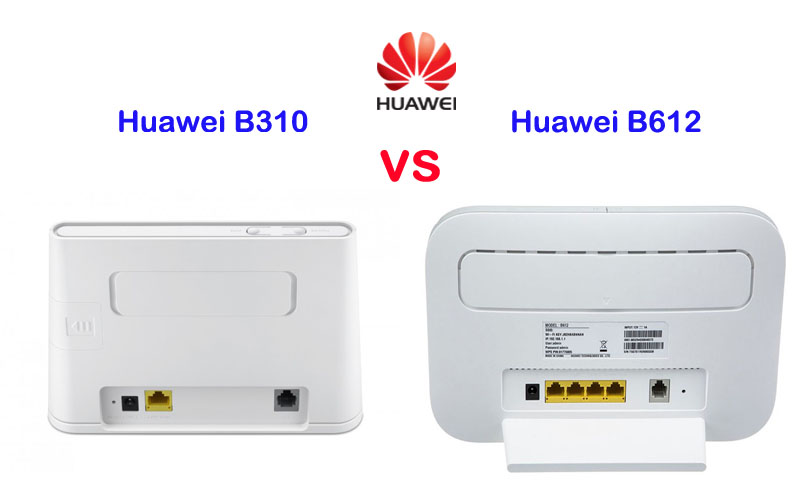
SummaryFrom the specs table, we could see the Huawei B612 is more advanced than Huawei B310 router. The main difference between the Huawei B612 and B310 focus on below:
- Speeds
- Variant models
- Wireless technology
- Interfaces
- Price
-
Huawei B900 AI Cube Router Review
At IFA 2018, Huawei presented a new device named “Huawei AI Cube(B900-230)”. The Huawei AI Cube is a smart speaker equipped with Amazon Alexa, an audio assistant developed by Amazon in the US. In addition to its function as a smart speaker, it also has a function as a stationary LTE wireless router. Huawei B900 AI Cube combines a 4G Modem, a home WiFi router, high-end 360-degree wireless speaker, and a Huawei-Amazon collaboration that promises Alexa integration and some not-yet-articulated AI capabilities.
Huawei B900 AI Cube AppearanceThe Huawei B900 AI Cube looks a little bit similar to its predecessor Huawei B528 but there is the obvious difference. On the top, there are three keys available: one volume up key, one volume down key, and one mute key. On the body, there are three LED indicators for Signal, WiFi and LAN. However, unlike the latest Huawei B618s-22d WiFi router, there is no connector for the external antenna in the B900 AI Cube.Below the indicators, there are two buttons: Power and WPS buttons. On the bottom of the Huawei B900 WiFi router, the product name Huawei B900-230, IP address (192.168.1.1), User name(admin), SSID, WiFi key, WPS pin, Power input and Made in China information are listed on the bottom label. The SIM card slot is also at the bottom with the Reset hole. The Huawei B900 WiFi cube uses Micro SIM card size. Below the IMEI & S/N number label, there is an Ethernet port for LAN and WAN. The power plug port is at the side of the Ethernet port.
Huawei AI Cube B900 Smart Speaker FunctionThe Huawei B900 AI Cube Router can be controlled via voice assistant Alexa with around 50,000 voice commands. For example, the router can play music or Internet radio through the built-in speaker. Smart home hardware such as TVs, Wi-Fi bulbs or refrigerators can also be controlled, as long as they are compatible with Amazon Alexa.As a stationary LTE WiFi router, the Huawei B900-230 cube could achieve download speed up to 300Mbps and upload speed to 50mbps. It has 802.11ac with dual-band Wi-Fi, in total up to 1.200 MBit/s are attainable over WLAN according to Huawei.. You get four microphones with far-field voice recognition. How many users could be connected with the cube is unknown yet, but we list the general specifications of Huawei B900 AI Cube for reference:* Support 4G LTE Band B1/B3/B7/B8/B20/B32/B38* Support 4G LTE Cat.6 2CC Technology - CA Bands: CA_3C/CA_7C/CA_38C/CA_1A-8A/CA_1A-20A/CA_3A-7A/CA_3A-8A/CA_3A-20A/CA_7A-8A/CA_7A-20A/CA_20A-32A/* Support 3G UMTS/WCDMA/HSPA+ B1/B8* LTE download speed to 300mbps, upload speed to 50mbps* WLAN: WiFi 802.111a/b/g/n/ac, dual-band(2.4GHz & 5GHz), 2 x 2 MIMO, 2 x 2 DBDC(Dual-band, dual-carrier)* External Antenna connector: No* SIM Card size: Micro SIM (3FF)* Interfaces: - 1 x RJ-45 for data, GE - 1 x SIM Card slot (3FF), 1 x power interface - 1 x Hi Key/ 1 x Reset Key/ 1 x Power key - 2 x Voice + - / 1 x Mute Key / 1 x Pause Key* Speaker: 15W Mono Speaker * Voice Input: 4 x Microphones* Main features: Huawei Hilink, Huawei Histen, Amazon Alexa, Far Field Voice Recognition* Power: AC 100V - 240V, DC 12V, 2A* Dimensions: 218mm (height) x 116mm (diameter)* Weight: 900g
Huawei said the Europe version would be available around the end of 2018, but not mention about the availability for US market. Regarding the Huawei B900 AI Cube price, Huawei didn’t give any information. We have to wait for the news from Huawei.

